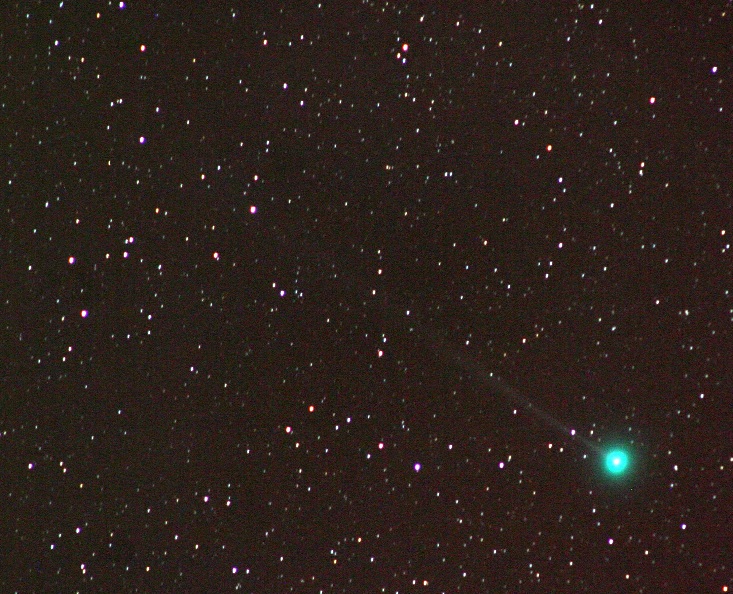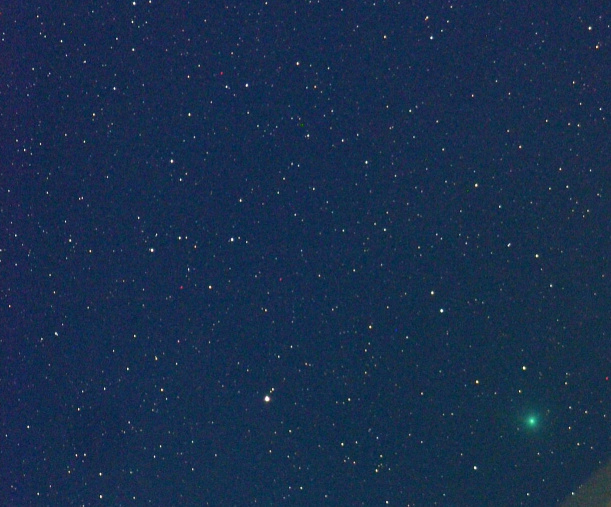C/2007 W1 (Boattini) is a non-periodic comet discovered on 20 November 2007, by Andrea Boattini at the Mt. Lemmon Survey. At the peak the comet had an apparent magnitude around 5.
Observational history
On 3 April 2008, when C/2007 W1 was 0.66 AU from the Earth and 1.7AU from the Sun, the coma (expanding tenuous dust atmosphere) of the comet was estimated to be as large as 10 arcminutes. This made the coma roughly 90,000 km (56,000 mi) in diameter.
On 30 April 2008, Alexandre Amorim reported that the comet was a magnitude 7.3 object as seen in 10 × 50 binoculars. By 8 May 2008, David Seargent noted that it brightened up to magnitude 6.4 in the naked eye. It was located within the constellation Pyxis on 20 May 2008.
On 12 June 2008, the comet passed within about 0.21005 AU (31,423,000 km; 19,525,000 mi) of the Earth. The comet came to perihelion (closest approach to the Sun) on 24 June 2008 at a distance of 0.8497 AU.
Orbit
The comet has an observation arc of 597 days allowing a good estimate of the orbit. The orbit of a long-period comet is properly obtained when the osculating orbit is computed at an epoch after leaving the planetary region and is calculated with respect to the center of mass of the Solar System. Using JPL Horizons, the barycentric orbital elements for epoch 2020-Jan-01 generate a semi-major axis of 1,582 AU, an apoapsis distance of 3,163 AU, and a period of approximately 63,000 years.
Before entering the planetary region, C/2007 W1 had a hyperbolic trajectory. The comet was probably in the outer Oort cloud with a loosely bound chaotic orbit that was easily perturbed by passing stars.
Meteor shower
A meteor shower known as the Daytime Craterids has been associated with C/2007 W1, thus becoming the first hyperbolic comet associated with a meteor shower. The meteor shower produced daytime outbursts in 2003 and 2009, with a Zenithal Hourly Rate of over 30 meteors per hour observed with radar.
References
Notes
Citations
External links
- C/2007 W1 at the JPL Small-Body Database
- Reconstructing the Morphology of an Evolving Coronal Mass Ejection (1 June 2008)




